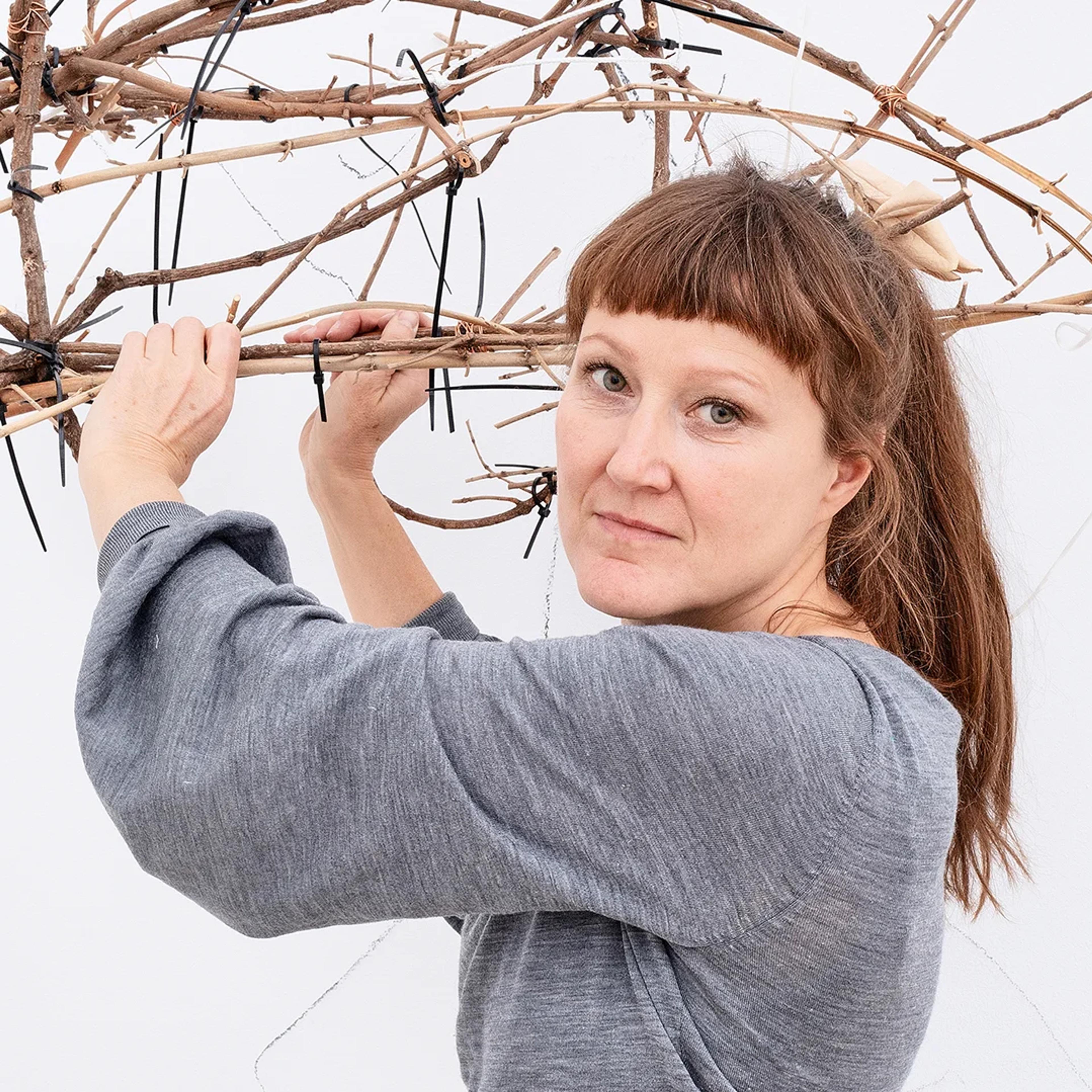Conversation
Stella Geppert
"Artistic creation is to practice tolerance of ambiguity without losing hope."

Prof. Stella Geppert (b. 1967 in Gustedt, Germany) is a sculptor and performing artist. She understands sculpture as a "relational investigation" into verbal and nonverbal bodily expression.
Physical movements and drawing form a constellation that shifts between material and energy, whose traces are inscribed as energetic forcefields into the oversized drawing space. The body’s sensory ability to “think its way into” space as well as into other bodies, materials, substances, and matter is an important aspect of Stella Geppert’s oeuvre, such as in "Routes Of Empathy". She teaches at the University of Art and Design in Halle (Saale), Germany.
MADELEINE SCHWINGE: Can art and culture promote social change and what role could artists and their work play in particular? Could one even speak of a leading role?
STELLA GEPPERT: Yes, art and culture can promote social change, but it depends entirely on the awareness of everyone involved. Art and culture are like planets in space, where different substances wrestle with each other to be brought into form.
Art is an instrument of expression with heightened awareness of social interrelations of an existential nature. As a creator of art, I see it as my responsibility to handle this artistic power with care and responsibility. As an artist I share. I share. Sharing does not work alone and only makes sense if others also share. If the artwork or performance succeeds in initiating an expanded view and collective feeling, then something like a kind of orbit is created to which we can dock again and again. It tells me about the urgent need for the expression of life in its time. Every expression is followed by an impression. In the most beautiful case without a name and simply through a sensual imprint and a feeling in an immediate way.
I would not like to assign a leading role to art and the work of art, but would like to understand it as something that is to be formed again and again, that pushes for embodiment through participatory consciousness. This collectively experienced embodiment in the experience of art promotes change. There is an intelligence of perception of art far removed from common mechanisms of reception, representation and marketing.
MS: In view of the radical changes and crises that characterise our epoch, can we even dare to hope for a better future? And what effect could 'narrative' have on the active shaping of the future?
SG: We live in an extremely urgent time to act, and we must think of those who will live on the planet after us.
I think it is a quality of artistic creation to have the courage to keep rebuilding and to practice tolerance of ambiguity without losing hope. Therein lies the ability to look "backwards and forwards" in the same way, both concretely and figuratively. Ultimately, "future" is an "always now" that is supported by the empathic ability to look far into the past. Within this shimmering vibration between times, a narrative emerges that can only be deciphered collectively.
MS: What impulses could emerge from a transdisciplinary dialogue between art, culture and other disciplines that would have the power to promote social change? Which experts and disciplines could be fruitful for your work?
SG: We would make a real leap in linking sciences and cultures if we continue to break down knowledge hierarchies and value chains. Astronaut, archaeologist, physicist, marine biologist.
MS: Assuming we succeed in building a better world on the ruins of the old one - what do you think this new world could look like? What do you personally want for a better tomorrow?
SG: Yesterday was even better than tomorrow. I see the step into the future involving repair, respect, empathy and humility. I have a desire for three-dimensional pausing.
MS: It is often said that a special ability of artists and creatives is to fearlessly dare to do something new and to always start from scratch on a blank piece of paper. What strategies or rituals do you personally use to start a new project?
SG: The white paper already has a history. Half-awake state, shaking my habit, green tea, sleeping, body techniques, consistently doing nothing, dancing and swimming. Seismographic standing around, visible disappearance, intuitive self-evidence of actions, dreaming thinking with heightened attention.
Front Photo. © Stella Geppert © Thomas Bruns